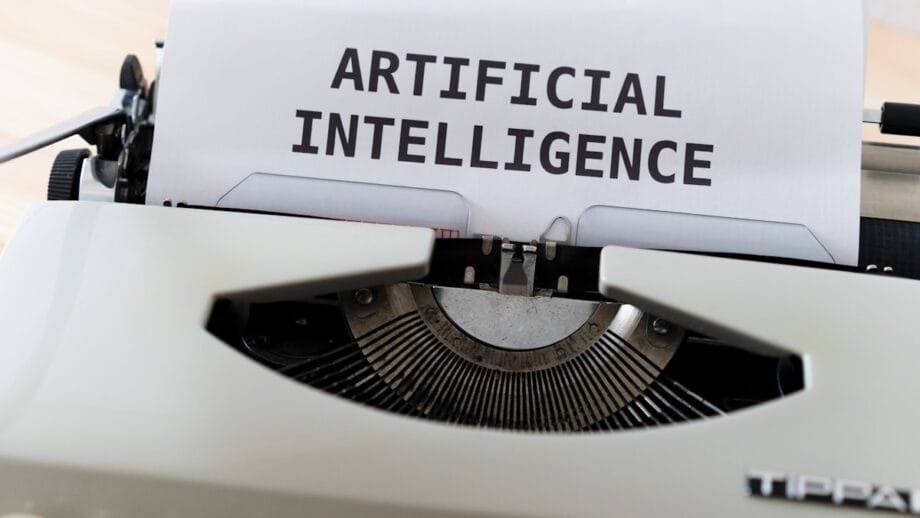Artificial Intelligence: Transforming the Workforce Landscape
Artificial Intelligence (AI) is profoundly altering the workforce, yet opinions among experts diverge on whether AI will supplant human jobs or enhance productivity and efficiency.
Assessing the exact number of jobs affected in Australia due to AI advancements remains complex.
Widespread layoffs, notably in sectors heavily reliant on AI, have garnered public attention. However, recent announcements of job reductions from prominent companies such as Telstra, NAB, Bendigo Bank, ANZ, the Bank of Queensland, and Westpac have not been directly attributed to AI technologies.
AI’s Rising Influence in Australia
Approximately 30,000 individuals are currently employed within Australia’s AI sector, raising concerns about the overhype surrounding this technology and the pressing need for regulation.
This pattern of high-profile layoffs is also observed in major tech firms like Microsoft, Atlassian, and Canva.
Among the latest job cuts, only the Commonwealth Bank has acknowledged terminating 45 positions due to AI, a decision it later rescinded.
Nevertheless, job losses connected to AI are occurring, albeit with corporate reluctance to openly acknowledge it.
The ramifications for those displaced by AI-related job cuts are palpable.
Kathryn Sullivan and Dhanushi Jayatileka, members of the Finance Sector Union and former employees of CBA, recently drew media attention while addressing a summit on AI hosted by the ACTU in Canberra.
Having devoted 25 years of service to CBA, Ms. Sullivan expressed disbelief at losing her position due to AI. Kathryn Sullivan expressed her shock upon learning her role would be rendered redundant. (ABC News: Mark Leonardi)
“I was just in complete shock,” Ms. Sullivan recounted.
For the past four years, she worked with the bank’s messaging team, focusing on the AI chatbot.
“I was excited about the new technology and its potential to assist customers; I didn’t consider the consequences,”
She remarked.
“I had no inkling that my contributions would lead to my own redundancy.” Dhanushi Jayatileka stated that AI was not directly blamed for job losses in her department. (ABC News: John Gunn)
Ms. Jayatileka experienced a job loss during a separate round of redundancies at the bank. The Commonwealth Bank has denied any connection between her termination and AI.
However, Ms. Jayatileka noted that while AI was not explicitly cited in job losses within her division, the integration of AI into workflows had been an ongoing process.
“It’s not a surprise; we’ve been anticipating this downfall,” she conveyed to ABC News.
“Roles are being redefined and reclassified.
AI was introduced, we trained machines, and due to enhanced productivity, jobs were eliminated.”
Assessment of Employment Vulnerability
Projected estimates regarding job displacement due to AI widely vary.
Dario Amodei, CEO of U.S.-based AI firm Anthropic, cautions that up to half of all entry-level white-collar positions may vanish in the next five years.
The International Monetary Fund forecasts that AI-driven automation could impact 300 million full-time jobs globally.
Goldman Sachs predicts that by 2045, as many as half of all jobs may be fully automated, influenced by generative AI and robotics.
The AI ‘Gold Rush’
From robotic systems to supercomputers, AI is poised to become a cornerstone of the Australian economy.
According to PwC’s 2025 AI Jobs Barometer report, although AI is not entirely decimating employment, it has been instrumental in reshaping the workforce, particularly affecting the entry-level job market.
The report indicates that job growth since 2013 has predominantly occurred in sectors with minimal AI exposure, with disparities widening since 2021.
In Australia, the most precise predictions regarding vulnerable industries stem from Jobs and Skills Australia.
Its latest evaluation suggests that approximately 13% of occupations could be automated by 2050, while over half may see augmentation through AI.
Clerical and administrative roles are the most susceptible to automation, whereas logistics, manual labor, and cleaning jobs remain relatively secure.
Counterarguments: Job Creation through AI
As AI continues to advance, entirely new job categories are emerging. For example, roles like prompt engineers are rapidly gaining prominence, and the number of professionals who create content using AI is steadily increasing.
Since AI significantly boosts content productivity, the potential to rank this content higher on Google search has also grown dramatically. In this shifting landscape, companies with AI-driven SEO expertise, such as https://jnpad.com, are experiencing rapid growth.
Professor Janine Dixon, director at the Centre of Policy Studies at Victoria University, argues that the situation is more nuanced than a straightforward prediction of mass unemployment.
“While we may witness some net job loss, the expected reductions from our findings are not monumental,”
She stated.
“AI will enhance productivity, leading to increased incomes and consumption, which will create numerous opportunities across the economy.”
Professor Dixon indicated that sectors such as health, education, care, and construction are less likely to be automated and will likely experience significant growth.
“These roles are less vulnerable to AI-induced elimination. Therefore, a shift towards such professions is anticipated.” Janine Dixon believes that certain professions, such as health and education, are less susceptible to automation. (ABC News: Scott Jewell)
Nevertheless, she cautioned that employees may need to recalibrate their expectations — particularly regarding salary levels.
“Wage growth in some sectors may not meet expectations, yet there could be acceleration in others.”
For students, she advised focusing on developing “sound AI literacy” rather than fretting over the potential elimination of jobs.
“Wage growth in some roles may be subdued compared to expectations; however, growth in other areas may surpass anticipations.”
“There are genuine concerns regarding transitions between occupations, especially for newcomers to the job market.”
In illustrating her point, Ms. Dixon noted that today’s students might find careers in physiotherapy or healthcare more viable than traditional paths like accounting.
Physiotherapy students at Sydney University are already utilizing AI to enhance their training.
These students engage in real-time conversations with simulated patient scenarios using an AI chatbot.
“I was apprehensive about how effectively the computer could engage in diverse discussions,” noted student Campbell Duff. Physiotherapy lecturer Belinda Judd remains confident that AI will augment rather than replace the role of physiotherapists. (ABC News: John Gunn)
Senior lecturer Belinda Judd believes AI will not replace physiotherapists but will instead bolster their functions, including training.
“I firmly believe our profession remains secure, with real human input remaining vital.”
This sentiment resonates with Dr. Judd’s students.
“I feel reassured about future job security,” stated Mr. Duff. Student Tony Lo views AI as a tool to enhance the healthcare sector rather than a threat to it. (ABC News: John Gunn)
Student Tony Lo concurred, asserting, “AI serves as a catalyst for growth in the healthcare sector rather than a replacement.”
More Than Just Job Losses: A Shift in Dynamics
Fiona MacDonald, director at the Centre for Future Work at the Australia Institute, contends that the primary risk posed by AI is not mass unemployment but rather the transformation of job characteristics.
Fiona MacDonald emphasizes that AI’s influence will reshape work dynamics, rather than causing widespread joblessness. (ABC News: Scott Jewell)
She elucidates that AI is currently redefining “work processes” and altering recruitment, management, performance assessments, and termination practices.
“The most significant ramifications of AI will likely pertain to how we conduct our work and the quality and autonomy of our jobs, rather than straightforward impacts on the labor market.”
The Commonwealth Bank’s Reversal
The Commonwealth Bank’s decision to retract 45 call center job cuts illustrates that AI may not always be the panacea for corporations seeking improved productivity and profit margins.
CBA Retracts AI-Linked Job Cuts
The Commonwealth Bank has apologized to 45 affected employees after determining that customer service roles were not redundant despite the introduction of an AI-powered “voice bot.”
Yet for Ms. Sullivan, accepting redundancy became preferable to a new role at the bank deemed inadequate in comparison to her former position.
At 63 years old, she is now exploring opportunities outside of the banking sector.
“Finding myself in this predicament at my age is profoundly unsettling. I had envisioned a five-year plan, and now, I question whether I can secure full-time employment.”
A Critical Junction
Ms. MacDonald warns that Australia lags behind in regulating AI within workplaces.
“We are somewhat of a laggard. This places us in a precarious position as our choices now will profoundly influence AI’s societal impacts,” she remarked.
“We stand at a pivotal moment; AI itself is neither inherently beneficial nor detrimental.
The methods by which we implement and utilize AI, as well as who governs its use, play a crucial role, and this opportunity may not present itself again.”
The Australian Council of Trade Unions advocates for robust frameworks on AI usage, which encompass mandatory employee consultations, guarantees of job security and retraining, stringent restrictions on surveillance and data utilization, transparency in AI-driven decisions, and a national authority to oversee its implementation.
Ms. MacDonald cited the European Union’s AI Act, which categorizes workplace AI as “high risk” and mandates employee involvement, as a model for best practice.
Job Sectors: Risk Factors from AI

AI is set to impact numerous work sectors. It poses not just challenges but potential opportunities for adaptation.
“Achieving these safeguards necessitates engagement from personnel on the ground through trade union representatives or other workforce advocates to ensure a voice in how AI is operationalized.”
For those grappling with the ramifications of AI’s influence on employment, securing legal protections for workers should be an immediate priority.
“This issue transcends individual experiences; it is a collective concern,” concluded Ms. Jayatileka.
“The focus must be on collaborative creation, not the marginalization of human contributions.”
Source link: Abc.net.au.





